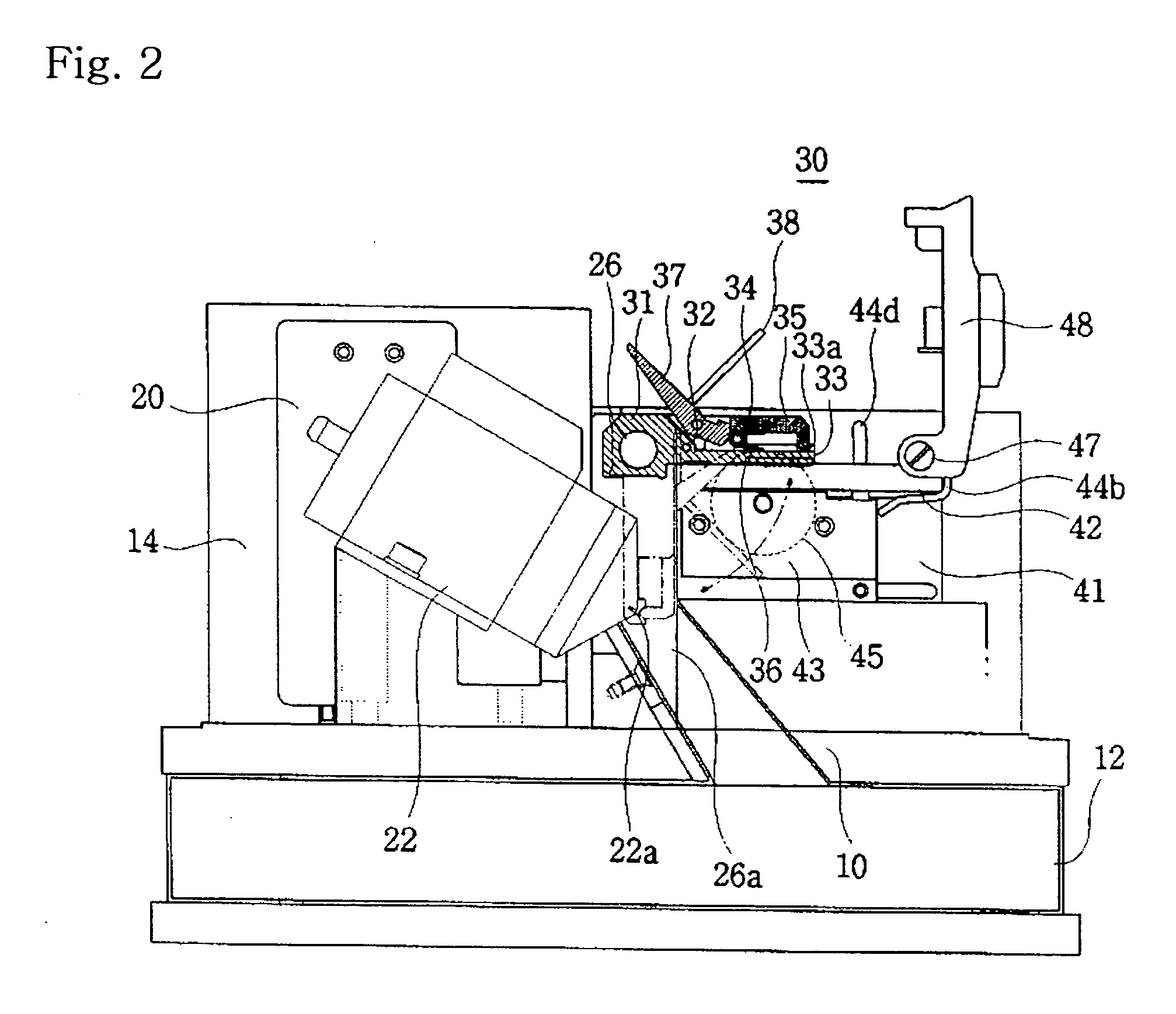Optical fiber treatment apparatus
- Summary
- Abstract
- Description
- Claims
- Application Information
AI Technical Summary
Benefits of technology
Problems solved by technology
Method used
Image
Examples
further embodiment 1
[0105]FIG. 15 is a cross-sectional view of further embodiment according to the present invention. FIG. 16 is an enlarged front view of important parts in FIG. 15. The figure illustrates the heart in the first and second embodiments in detail
[0106] Referring to figure, a heater 500 in the further embodiment comprises a housing 510, blastpipe 520 and a heating body 530.
[0107] In the housing, a nozzle 512 for discharging air is connected to one end of a hollow body 511 and a closing body 513 for closing the body 511 is connected to the other end of the body. A sharpened point is formed in the tip end of the nozzle 512, and a nozzle opening for discharging air is formed in the sharpened point.
[0108] Further, the closing body 513 is formed with a passing-through hole 514 for passing the heating body 530 from the outside to the inside of the housing 510. An air passage 515 is also formed in the closing body and connected to the blastpipe 520 to supply air from the outside (the air gene...
further embodiment 2
[0116]FIG. 17 is a cross-sectional view of further embodiment 2 according to the present invention. In fig., a sleeve welding part is installed in front of the heater, which is for installing a shrinking sleeve in order to protect a welded point and to weld the shrinking sleeve to the welded point after performing a welding process of optical fibers.
[0117] Referring Fig, a sleeve welding part 600 is structured such that a passage 600 for a heated air from the heater 22 is formed on the base 10 in front of the heater 22, and a heating room is formed in the passage 610.
[0118] The heating room 620 has a door 630 for opening / closing the heating room 620 in order to insert an optical fiber with a shrinking sleeve S in the room. The shrinking sleeve S inserted in the heating room 620 is welded to the optical fiber by a heated air from the heater 22, the heated air also peeling off an outer cover of the optical fiber.
[0119] With such structure, the welding time of the sleeve by the heat...
further embodiment 3
[0122]FIG. 18 is a circuit block diagram of further embodiment according to the present invention. This circuit is more detailed and advanced comparing with the control panel in the foregoing embodiments.
[0123] Referring figure, a control panel 700 according to the further embodiment 3 comprises a key pad 710, a thermistor 720 for sensing temperature, a microprocessor as control part, and a driver 740.
[0124] The key pad 710 is structured to have a key board for turning on / off electronic power and inputting a set-up heating temperature and so forth, and a predetermined button on the base 10. The thermistor 720 is for sensing temperature in a space heated by the heater 22 or the sleeve heater 640 in the further embodiment 2, and installed on a side of the space.
[0125] The microprocessor 730 receives the temperature signal sensed by the thermistor 720 in real time, and controls the heater or the sleeve heater when a difference between the sensed temperature and the set up temperatur...
PUM
 Login to View More
Login to View More Abstract
Description
Claims
Application Information
 Login to View More
Login to View More - R&D
- Intellectual Property
- Life Sciences
- Materials
- Tech Scout
- Unparalleled Data Quality
- Higher Quality Content
- 60% Fewer Hallucinations
Browse by: Latest US Patents, China's latest patents, Technical Efficacy Thesaurus, Application Domain, Technology Topic, Popular Technical Reports.
© 2025 PatSnap. All rights reserved.Legal|Privacy policy|Modern Slavery Act Transparency Statement|Sitemap|About US| Contact US: help@patsnap.com



